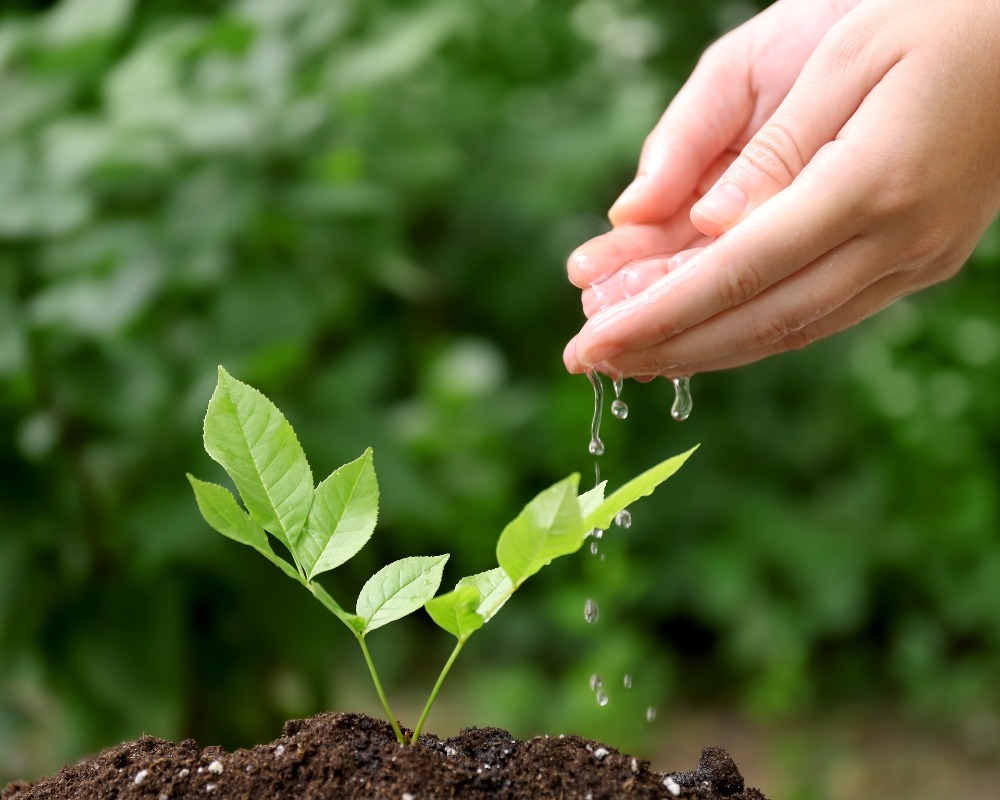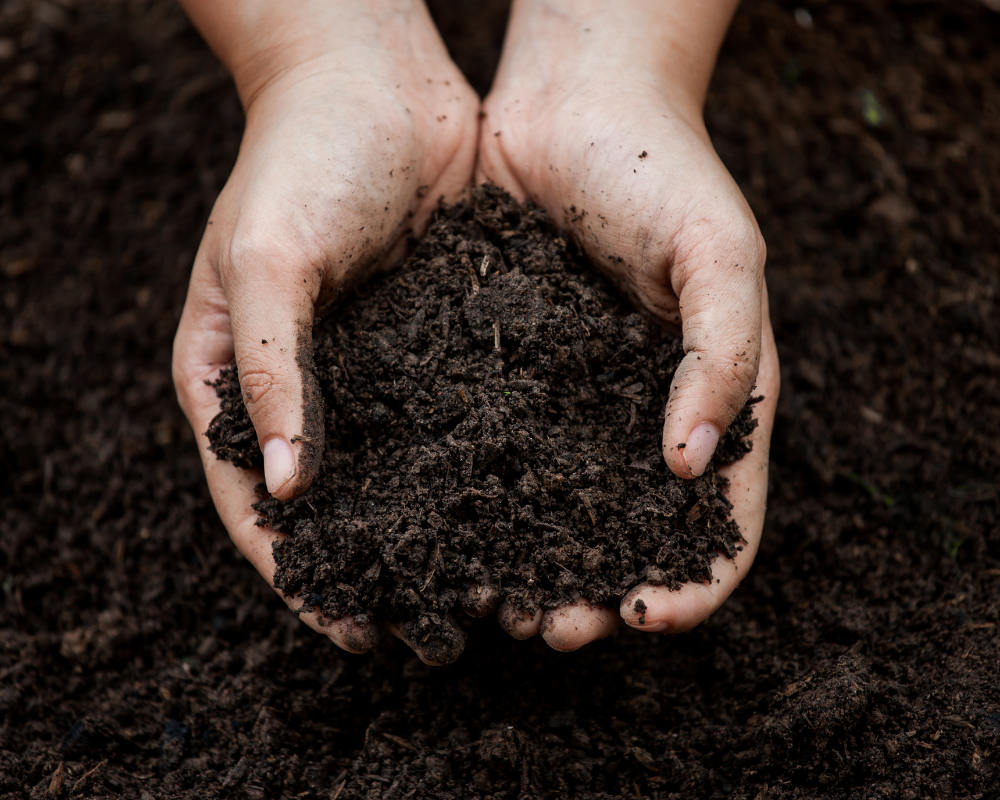Healthy, Drought-Tolerant, and Sustainable Landscapes
Written by Jerry Parr
It is no secret that our natural resources have a precious limited supply. We live in Texas where summer watering restrictions have become the rule rather than the exception. If you’re looking at your landscape wondering how it can survive, you’re not alone. The Parker County Master Gardeners have been considering this dilemma for a good long while. In fact, many organizations across the state are considering alternatives and developing some innovative plans to deal with this problem.
“We do not inherit the earth from our ancestors; we borrow it from our children.” This Native American proverb is at the heart of what the Lady Bird Johnson Wildflower Center and other similar organizations are calling the Sustainable Sites Initiative. Their proposal is aimed at changing the way we design and maintain our landscapes. Their effort is very similar to the Earth-Kind approach developed by Texas A&M University, and the Texas SmartScape approach developed by the North Central Texas Council of Government. Each of these programs has the goal of creating beautiful landscapes while reducing the use of water and other resources.
The Sustainable Sites Initiative attacks the problem with a variety of methods. It has at its core the following principles:
- Treat water as a resource,
- Value your soil,
- Conserve material resources,
- Foster environmental stewardship, and
- Preserve plant materials.
When these methods are applied in the home landscape it produces viable results. The landscapes are beautiful, the water usage is minimal, and the effort of long-term maintenance is minor. If you’re like most Parker County residents, you’re shaking your head and saying, “I’m going to have to see it to believe it!” And that’s why we’re here. We want you to see it so you can believe it.
On Saturday, August 16, the Parker County Master Gardeners will be presenting a day-long workshop on the topic of creating a sustainable landscape. Attendees will receive a check list to evaluate their existing landscape, a list of drought-tolerant plants for Parker County, and knowledge to help them establish a beautiful landscape that requires minimal maintenance. Breakout sessions on rainwater harvesting, drip irrigation, and weed and plant disease identification will provide a hands-on application of the information from each class. Our instructors will provide you with a practical application of the principles of the Sustainable Sites Initiative.




Treat Water as a Resource
The habit of watering your landscape is becoming an endangered practice. The combination of years of drought with increased population growth has resulted in water restrictions in many north Texas communities. We can adapt to this new trend by implementing a number of methods to conserve water and utilize what rain we do get to the fullest.
One of the most important practices a homeowner can do is to reduce the most water hungry plant in the landscape, turfgrass. Begin replacing areas of your lawn with drought-tolerant plants or hardscapes such as paths, decks and patios. Use mulch to help conserve water. Then, install drip irrigation in these new landscape beds. Consider installing a rainwater harvesting system to catch the rain that falls on your roof, and redirect it to a “rain garden” that will put the water to use and keep it on your property. Plant groundcovers or native grasses to help promote water retention. Each of these practices will have a considerable effect on your water usage.
Value Your Soil
It takes 1000 years to create one inch of topsoil, and one day for a bulldozer to remove it. Compacted soil caused by heavy equipment can lead to many problems that affect plant growth and lead to water run-off on your property. If you have good soil, keep it by maintaining it from year to year. If, like many of us, you have clay soil, amend it by adding compost along with a commercial product called expanded shale. If your soil is sandy, amend it with compost. Make every effort to take care of your soil, and it will reward you by retaining and redirecting water to your thirsty plants.
Conserve Material Resources
A typical landscape can produce large amounts of waste plant materials such as grass cuttings, tree or shrub trimmings, and leaves. These materials should be composted and returned back to your landscape to improve soil health and preserve valuable nutrients. Never bag your grass when you mow it unless you are capturing weed seeds to keep them from germinating in the lawn. Allow the mower to mulch the grass and return it to the ground where it will decompose to add nutrients to the soil. Compost leaves and other plant materials so you can reuse them in your landscape. Compost is a critical piece in the puzzle of our Parker County soil.
Foster Environmental Stewardship
A study of our water quality reveals that we use way more fertilizers, herbicides, and insecticides than we need. This not only contributes to water pollution from runoff, it also hits the pocketbook every time you purchase a new bag or bottle. Do yourself a favor and have a soil test. Then you will know exactly what kind of fertilizer you need and how much to apply. When you purchase fertilizer, go for the extended release. It will stay in your soil and benefit your plants for months. When you have a choice, choose native or adaptive plants. These plants have adapted to survive in Texas without the help of fertilizer.
Use the Integrated Pest Management (IPM) philosophy for managing insects, plant diseases, and weeds. This philosophy has the application of a chemical control as the last resort. The first step is to monitor and assess what is occurring, and apply controls only when they are actually needed. Consider cultural controls such as using plants that are disease resistant, and encouraging the presence of beneficial insects. Implement lawn and gardening practices that discourage the presence of weeds and destructive insects. Be willing to accept a little insect damage as part of a healthy landscape. If you do need to apply a chemical control, apply as directed and spot treat only the areas and plants that are affected.
Preserve Plant Materials
There are many native and adapted plants that are drought-tolerant and able to thrive in our alkaline soils that will provide interest and beauty year-round. If you are clearing your property for landscaping or a garden, carefully evaluate the native plant life. You may be surprised at the beauty and diversity of the trees, shrubs, and flowers already growing once the clutter is cleaned up. When adding or replacing plants in your landscape choose native or adaptive plants over the more exotic varieties. It will help reduce the need for irrigation, fertilization, and pesticides.
Imagine the satisfaction of looking forward to summer with confidence that your landscape will not only survive, but thrive. Put your worries in the rear-view mirror and join us Saturday, August 16, to learn more about how you can have a beautiful, sustainable landscape. The workshop will be held at the extension office on 604 N Main Street in Weatherford. To register, call 817-598-6168.
Have a question? pcmgaquestions@gmail.com
Parker County Master Gardeners, Texas A&M AgriLife Extension
